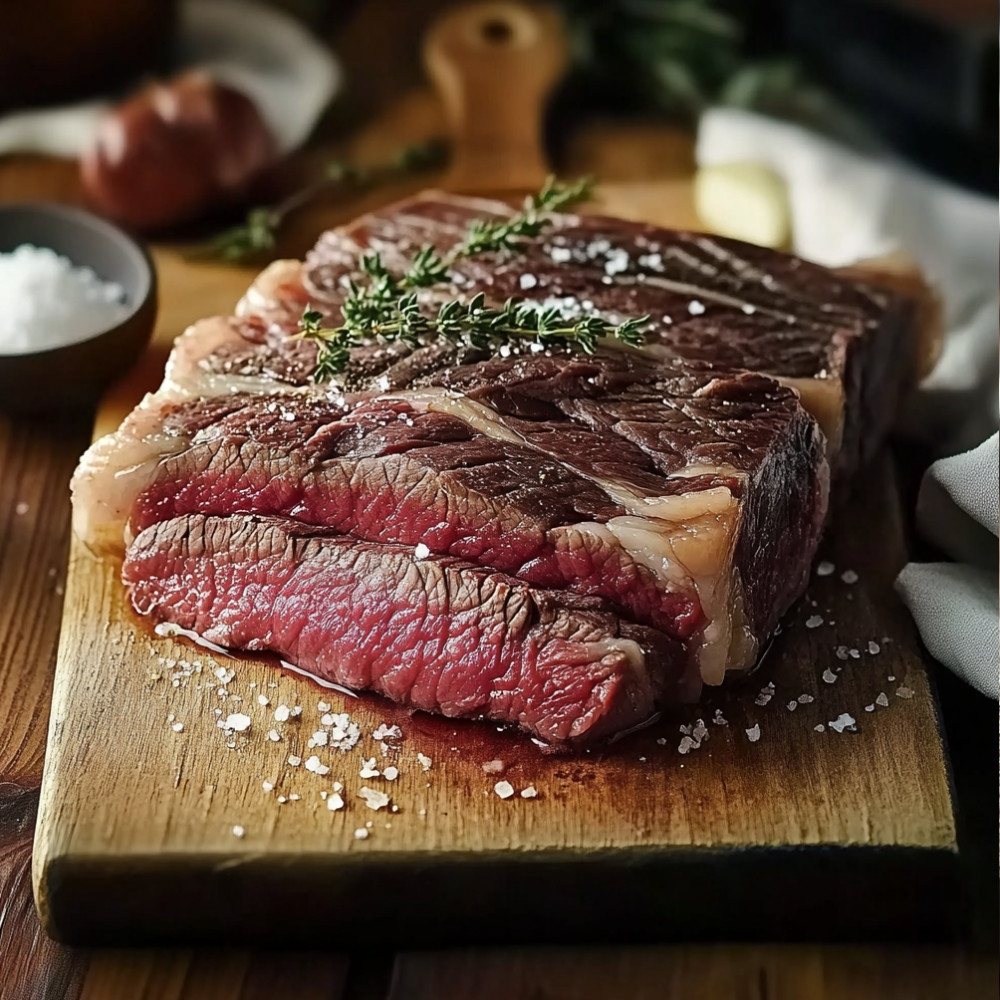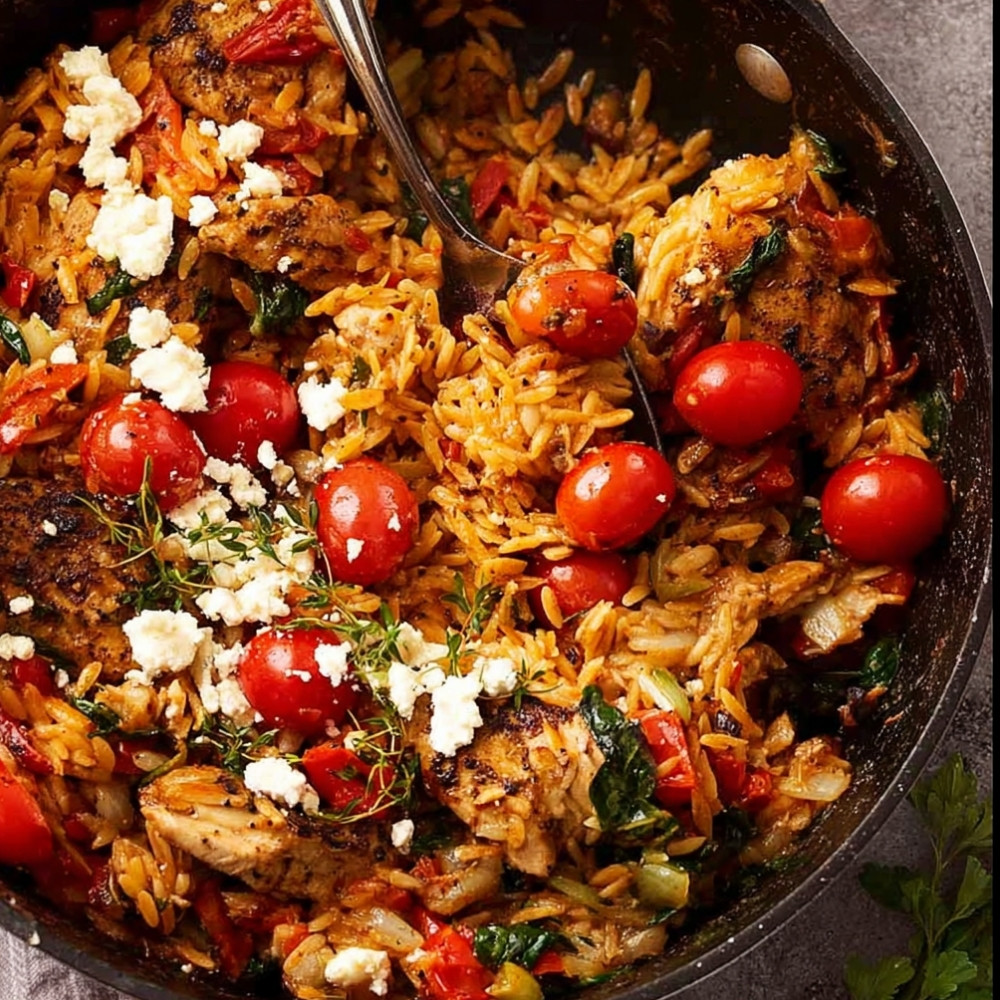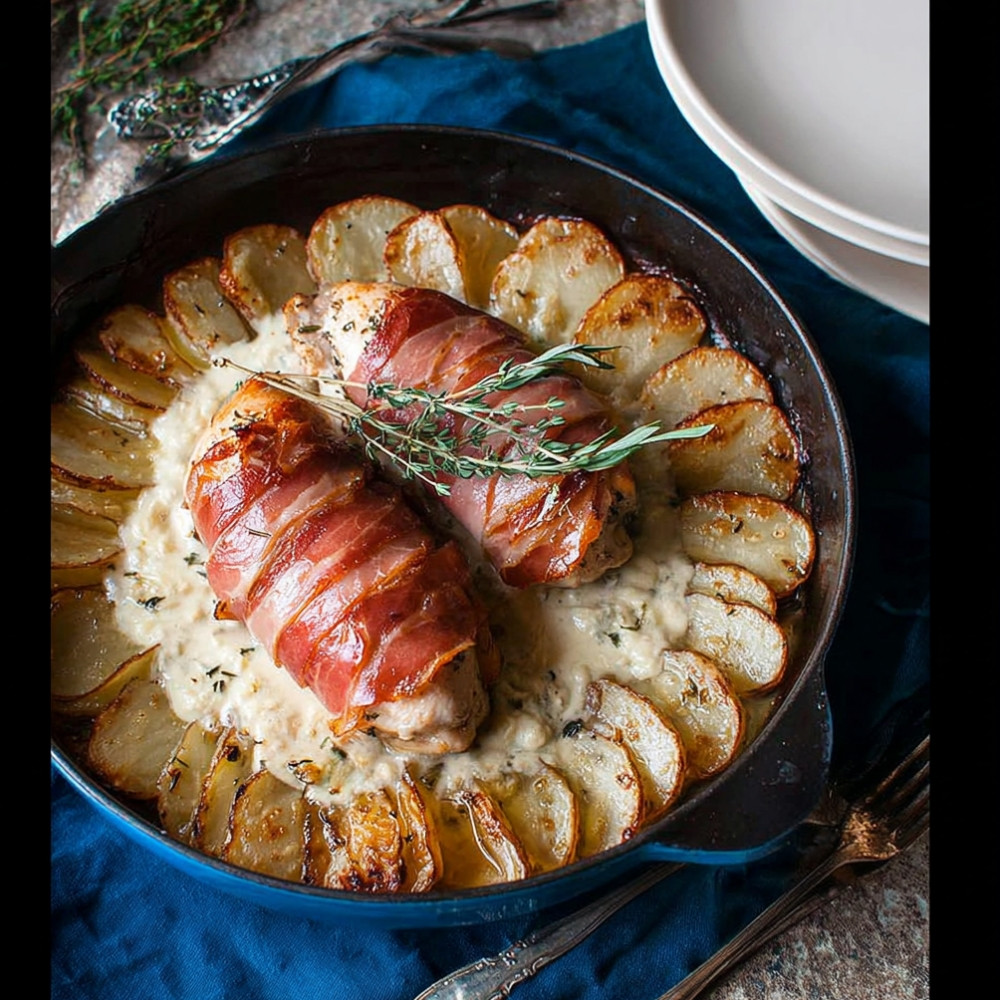Introduction
Cooking a dry-aged steak is an art that highlights the rich flavors and tender textures that come from the aging process. Dry-aging enhances the steak’s taste, resulting in a unique culinary experience. In this article, we will guide you through the steps to cook the perfect dry-aged steak, ensuring it is juicy, flavorful, and cooked to perfection.
Detailed Ingredients with measures
Steak: 1 (1.5 to 2 inches thick, preferably ribeye or New York strip)
Salt: 1 to 2 teaspoons (fine sea salt)
Black Pepper: 1 teaspoon (freshly ground)
Oil: 1 tablespoon (high smoke point oil such as canola or avocado)
Butter: 2 tablespoons (unsalted)
Garlic: 2 cloves (smashed)
Fresh Herbs: a few sprigs (such as thyme or rosemary)
Lemon: 1 (for serving, optional)
Prep Time
Approximately 30 minutes. While this includes the time needed to season and bring the steak to room temperature, the actual prep is quite quick.
Cook Time, Total Time, Yield
Cook Time: 10-15 minutes (depending on the desired doneness)
Total Time: 40-45 minutes (including prep and resting)
Yield: 2 servings (based on a 1.5 to 2-pound steak)
Cooking a dry-aged steak is a rewarding process that not only enhances its flavors but also provides a delightful cooking experience. Enjoy your perfectly cooked steak!
Detailed Directions and Instructions
Step 1: Preparing the Steak
Start by removing the dry-aged steak from the refrigerator and letting it sit at room temperature for about 30-60 minutes. This helps the steak cook more evenly.
Step 2: Seasoning
Generously season both sides of the steak with salt and freshly ground black pepper. Avoid adding any other seasonings at this stage to allow the natural flavors of the dry-aged beef to shine.
Step 3: Preheating the Pan
While the steak is resting, preheat a cast-iron skillet or heavy pan over high heat. Make sure it is very hot before adding the steak, as this will help create a perfect crust.
Step 4: Searing the Steak
Once the pan is hot, add a small amount of oil with a high smoke point, such as canola or avocado oil. Place the steak in the pan, and do not move it for about 3-4 minutes to allow a proper crust to form. Flip the steak and sear the other side for an additional 3-4 minutes.
Step 5: Cooking to Desired Doneness
Reduce the heat to medium and continue cooking the steak, turning it occasionally for even cooking. Use a meat thermometer to check for desired doneness – around 130°F for medium-rare.
Step 6: Resting
Once the steak reaches your preferred doneness, remove it from the pan and let it rest on a cutting board for about 5-10 minutes. This allows the juices to redistribute throughout the meat.
Step 7: Slicing and Serving
After resting, slice the steak against the grain into thick pieces. Serve immediately, showcasing the rich flavors and tenderness of the dry-aged meat.
Notes
Choosing the Right Steak
Look for a high-quality dry-aged steak, typically ribeye or New York strip, to maximize flavor and tenderness.
Important Cooking Tips
Always ensure the pan is extremely hot before adding the steak to achieve a good sear and avoid any steaming.
Resting Is Crucial
Don’t skip the resting period after cooking; it is essential for optimal juiciness.
Cook techniques
Choosing the Right Dry-Aged Steak
Selecting a good cut of dry-aged steak is crucial. Look for marbling, coloration, and thickness to ensure quality.
Preparing the Steak
Let the steak sit at room temperature for about 30 minutes before cooking. This allows for even cooking.
Seasoning the Steak
Use a simple seasoning of salt and pepper. This enhances the natural flavors without overpowering them.
Searing the Steak
Sear the steak in a hot cast-iron skillet or grill for a nice crust, which locks in the juices. Typically, 2-3 minutes per side works well.
Cooking to Desired Doneness
Use a meat thermometer to check the internal temperature for your preferred doneness (rare, medium, etc.).
Resting the Steak
After cooking, let the steak rest for 5-10 minutes. This allows the juices to redistribute for a more flavorful outcome.
Slicing the Steak
Slice against the grain to maximize tenderness and enhance the eating experience.
FAQ
What is dry-aged steak?
Dry-aged steak is beef that has been stored in a controlled, chilled environment to enhance its flavor and tenderness.
How long should I dry age steak?
Aged steaks can be dry-aged for a minimum of 21 days, but some may prefer aging for longer depending on taste preferences.
Can I dry age steak at home?
Yes, with the right conditions, such as temperature control and airflow, you can dry age steak at home.
What’s the difference between wet-aged and dry-aged steak?
Wet-aged steak is vacuum-sealed and aged in its own juices, while dry-aged steak is exposed to air, resulting in a more concentrated flavor.
What should I serve with dry-aged steak?
Steamed vegetables, potatoes, or a simple salad complement dry-aged steak well and enhance the meal.
Conclusion
Drawing out the rich, intense flavors of dry-aged steak is an art that can elevate your dining experience. By understanding the cooking techniques and best practices, you can enjoy a perfectly cooked dry-aged steak that brings out its unique qualities. Whether you prefer grilling, pan-searing, or broiling, the method you choose can enhance the steak’s natural taste and texture. Pairing it with simple sides will further complement its robustness, making for an unforgettable meal.
More recipes suggestions and combination
Garlic Herb Butter Steak
Enhance your dry-aged steak with a rich garlic herb butter. Simply melt butter with minced garlic, fresh herbs, and a pinch of salt, then drizzle over the steak just before serving.
Grilled Vegetables
Serve your steak alongside a medley of grilled seasonal vegetables like zucchini, bell peppers, and asparagus. The charred flavors will harmonize beautifully with the steak.
Red Wine Reduction Sauce
Create a luxurious red wine reduction sauce to accompany your steak. Simmer red wine with shallots and beef broth until thickened, then finish with a touch of butter for a silky texture.
Classic Caesar Salad
A Classic Caesar salad makes for a refreshing side when served with dry-aged steak. The crisp romaine, creamy dressing, and sharp parmesan provide a delightful contrast.
Roasted Potatoes
Crispy roasted potatoes seasoned with rosemary and garlic are a hearty addition that pairs well with the richness of dry-aged steak.
Blue Cheese Crumbles
Sprinkle blue cheese crumbles on top of your steak before serving. The bold flavor of blue cheese complements the steak’s richness incredibly well.
Chimichurri Sauce
For a fresh twist, try serving dry-aged steak with chimichurri sauce. This vibrant mixture of parsley, garlic, vinegar, and olive oil adds a zesty kick.
Mac and Cheese
Creamy macaroni and cheese makes for a comforting side that can balance the bold flavors of a dry-aged steak, offering richness in every bite.




Leave a Reply